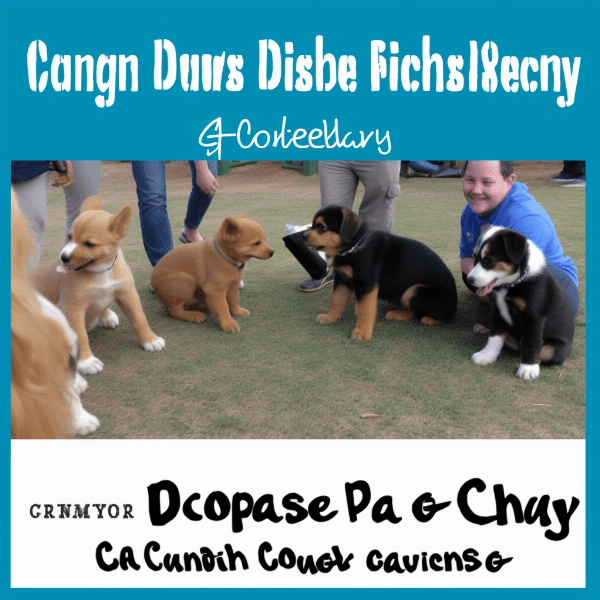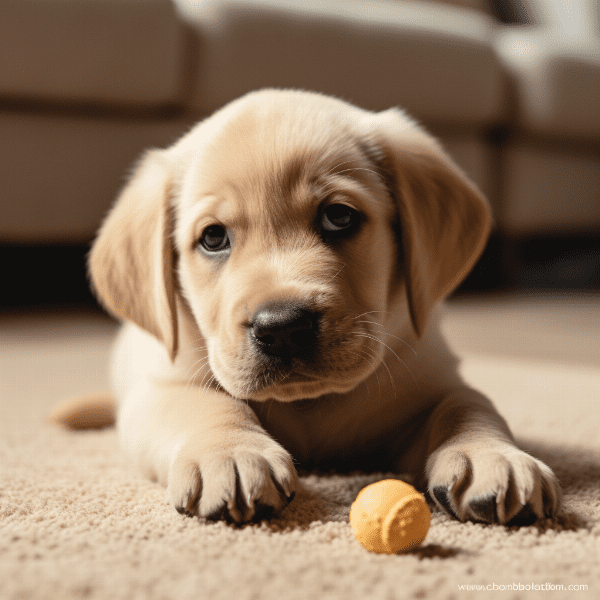DOCTYPE html PUBLIC “-//W3C//DTD HTML 4.0 Transitional//EN” “http://www.w3.org/TR/REC-html40/loose.dtd”>
Table of Contents
- Understanding Why Dogs Mouth Hands
- Teaching Appropriate Interaction with Toys
- Positive Reinforcement Training
- Consistency in Corrections
- Avoiding Physical Punishment
- Using a Firm Voice and Redirecting Behavior
- Providing Sufficient Exercise and Mental Stimulation
- Seeking Professional Help if Necessary
- Teaching Children How to Interact with Dogs Safely
- The Importance of Socializing Puppies Early
Understanding Why Dogs Mouth Hands
Dogs are natural chewers and mouthers, and it is their way of exploring and interacting with their environment. When they are young, they explore their surroundings with their mouth and teeth, including the hands of their owners. However, if they are not trained to understand what is appropriate and what is not, they may continue this behavior even into adulthood, causing discomfort and injury.
The Importance of Early Training
It is important to start training your dog early to prevent mouthing behavior. Puppies begin teething at around four months of age, and they may start mouthing and chewing on everything they can get their mouths on. It is during this time that you should start teaching your puppy what is appropriate to chew on and what is not.
Attention-Seeking Behavior
Sometimes dogs will mouth or chew on their owner’s hands as a way of seeking attention. They may do this when they want to play or if they feel neglected. If you react to this behavior by giving them attention, they may continue to do it as a way of getting your attention.
Fear and Anxiety
In some cases, dogs may mouth or nip at hands out of fear or anxiety. They may feel threatened or uncomfortable, and mouthing may be their way of communicating their discomfort. This behavior may also be a sign of stress, and it is important to identify and address the underlying cause of the anxiety.
Health Issues
In rare cases, mouthing behavior may be a sign of an underlying health issue. Dogs may mouth their owner’s hands as a way of communicating pain or discomfort, particularly if they have dental problems. If you notice that your dog’s mouthing behavior has suddenly changed, it is important to have them checked by a veterinarian.
Understanding why your Dog mouths your hand is the first step in preventing this behavior. By identifying the underlying cause, you can work to address it and train your dog to engage in appropriate behavior. With patience and consistency, you can teach your dog to interact with you and others in a safe and appropriate way.
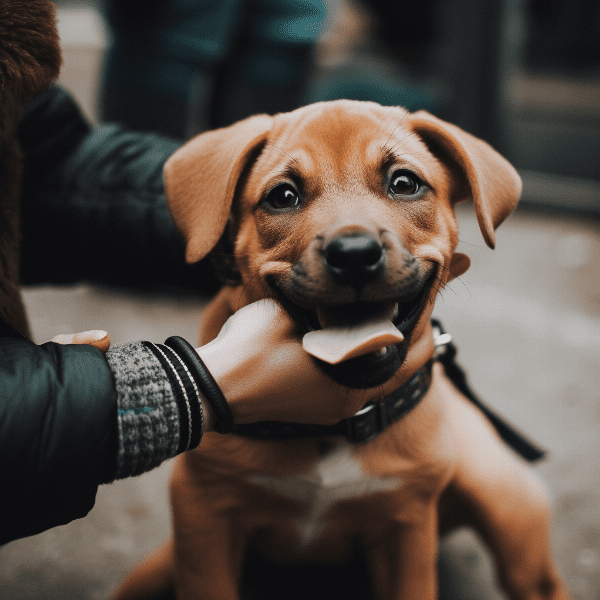
Teaching Appropriate Interaction with Toys
One of the best ways to prevent mouthing behavior in dogs is to teach them appropriate ways to interact with toys. By providing them with suitable toys and encouraging them to play with them, you can redirect their chewing and mouthing behavior to more appropriate objects.
Choosing the Right Toys
When selecting toys for your dog, it is important to choose toys that are safe and durable. Avoid toys that are small enough to be swallowed or that can be easily torn apart, as this can be a choking hazard. Also, avoid toys with parts that can break off or that can be ingested, such as squeakers or buttons.
Encouraging Playtime
Encouraging your dog to play with their toys can be an effective way of redirecting their mouthing behavior. Playtime is an important part of a dog’s daily routine and can help them burn off excess energy, which can reduce destructive behavior. You can make playtime more engaging by using toys that challenge your dog’s mind, such as puzzle toys or treat dispensers.
Teaching the “Leave It” Command
Teaching your dog the “leave it” command can be helpful in redirecting their mouthing behavior. This command can be used to get your dog to stop mouthing and chewing on inappropriate objects and redirect their attention to their toys. To teach this command, start by holding a treat in your hand and saying “leave it” as you close your hand. When your dog stops trying to get the treat, reward them with a different treat and praise them.
Supervising Playtime
Supervising your dog during playtime is important to ensure that they are playing with their toys in a safe and appropriate manner. If you notice your dog starting to mouth or chew on inappropriate objects, redirect them to their toys and reward them when they engage with them.
By teaching your dog appropriate ways to interact with toys, you can redirect their mouthing behavior to more appropriate objects. With patience and consistency, you can train your dog to engage in appropriate playtime behavior and reduce the risk of injury from mouthing.
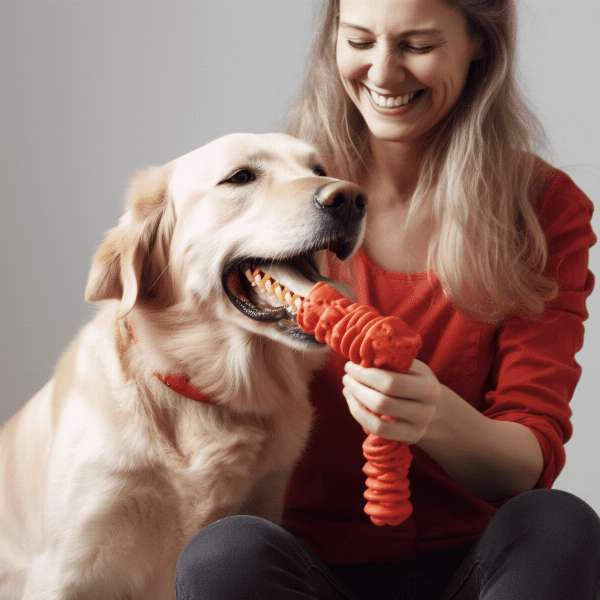
Positive Reinforcement Training
Positive reinforcement training is a method of training that focuses on rewarding your dog for good behavior. This can be an effective way of preventing mouthing behavior in dogs, as it encourages them to engage in appropriate behavior and discourages them from engaging in inappropriate behavior.
Using Treats and Rewards
Using treats and rewards to reinforce good behavior is an important part of positive reinforcement training. When your dog engages in appropriate behavior, such as playing with their toys or refraining from mouthing, reward them with a treat or praise. This will help to reinforce the behavior and encourage them to continue it in the future.
Ignoring Bad Behavior
Ignoring bad behavior can also be an effective way of preventing mouthing behavior in dogs. When your dog mouths your hand, simply ignore the behavior and do not give them attention. This will help to discourage the behavior and teach your dog that it is not an effective way of getting attention.
Clicker Training
Clicker training is another method of positive reinforcement training that can be used to prevent mouthing behavior in dogs. This involves using a clicker to mark the behavior you want to reinforce and then rewarding your dog with a treat or praise. This can be particularly effective when teaching your dog to engage in appropriate playtime behavior.
.
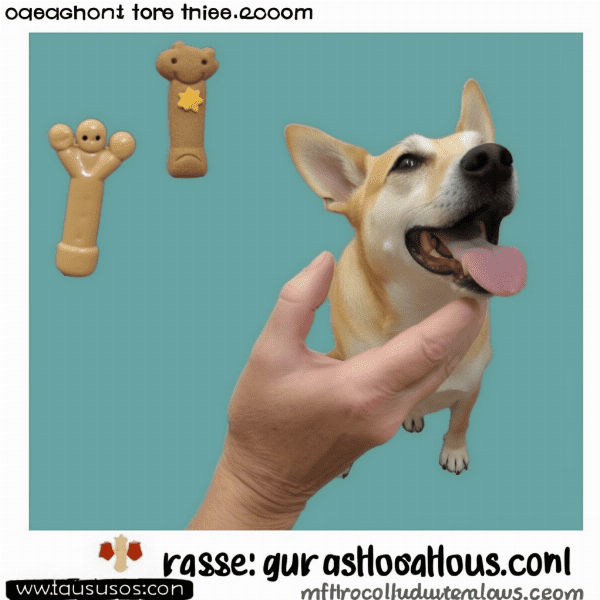
Consistency in Corrections
Consistency in corrections is an important aspect of preventing mouthing behavior in dogs. When your dog engages in inappropriate behavior, such as mouthing your hand, it is important to correct the behavior consistently and immediately.
Using Verbal Corrections
Using verbal corrections is an effective way of correcting mouthing behavior in dogs. When your dog mouths your hand, use a firm voice to say “no” or “stop.” This will help to communicate to your dog that the behavior is not acceptable. It is important to use the same command consistently to avoid confusion.
Time-Outs
Time-outs can also be an effective way of correcting mouthing behavior in dogs. When your dog mouths your hand, immediately stop interacting with them and put them in a designated time-out area. This will help to teach your dog that mouthing behavior results in the loss of attention and playtime.
Avoiding Physical Punishment
It is important to avoid physical punishment when correcting mouthing behavior in dogs. Physical punishment, such as hitting or kicking, can lead to fear and aggression in dogs and may actually increase the likelihood of mouthing behavior.
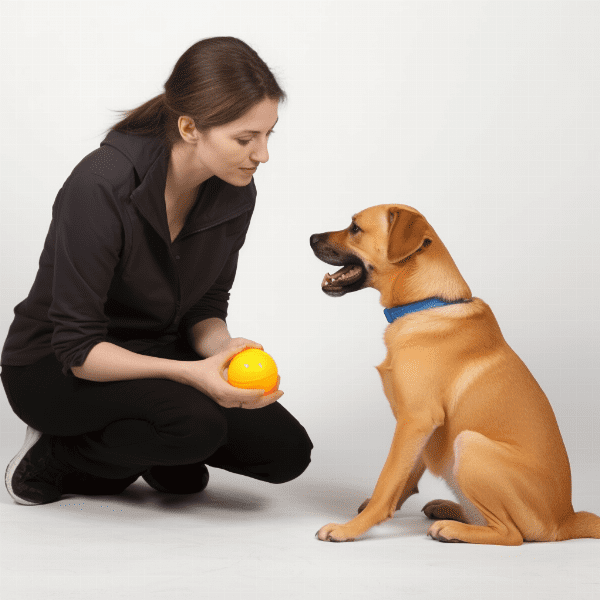
Avoiding Physical Punishment
Physical punishment, such as hitting or kicking, should never be used when training or correcting a dog’s behavior, including mouthing behavior. There are several reasons why physical punishment is not an effective way to correct dog behavior, and it can actually lead to more harm than good.
Negative Consequences
Physical punishment can have negative consequences on your dog’s behavior and emotional well-being. Dogs may become fearful or anxious and may start to exhibit more aggressive behavior. This can create a cycle of negative behavior that is difficult to break.
Lack of Understanding
Dogs do not understand physical punishment in the same way that humans do. They may associate the punishment with the punishment itself rather than the behavior that led to it. This can lead to confusion and a lack of understanding about what is expected of them.
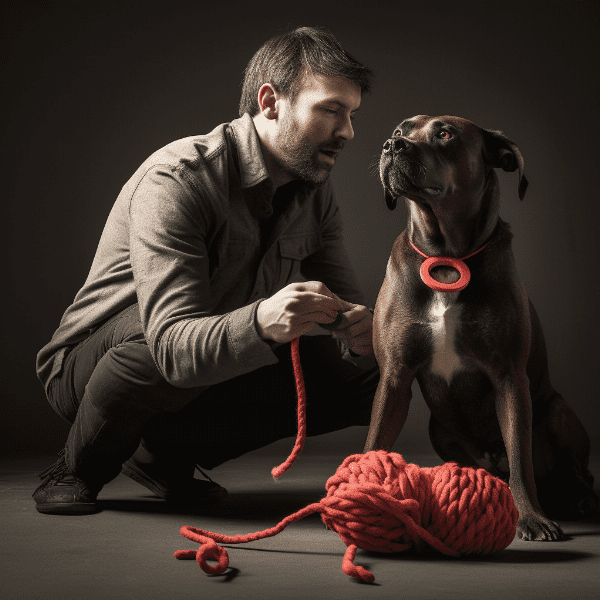
Using a Firm Voice and Redirecting Behavior
Using a firm voice and redirecting behavior can be an effective way of correcting mouthing behavior in dogs. By using a firm voice to communicate that the behavior is not acceptable and redirecting their attention to an appropriate object, you can teach your dog to engage in appropriate behavior.
Firm Voice
Using a firm voice can help to communicate to your dog that their behavior is not acceptable. When your dog mouths your hand, use a firm voice to say “no” or “stop.” This will help to teach your dog that the behavior is not acceptable.
Redirecting Behavior
Redirecting your dog’s attention to an appropriate object can be an effective way of preventing mouthing behavior. When your dog starts to mouth your hand, redirect their attention to a toy or bone that they can chew on. This will help to teach your dog that chewing on toys is appropriate and mouthing hands is not.
Consistency
Consistency is key when using a firm voice and redirecting behavior to correct mouthing behavior in dogs. It is important to consistently use a firm voice and redirect their attention to an appropriate object every time the behavior occurs. This will help to reinforce the behavior you want to encourage and discourage the behavior you want to discourage.
By using a firm voice and redirecting behavior, you can teach your dog to engage in appropriate behavior and prevent mouthing behavior. With patience and consistency, you can train your dog to interact with you and others in a safe and appropriate way.
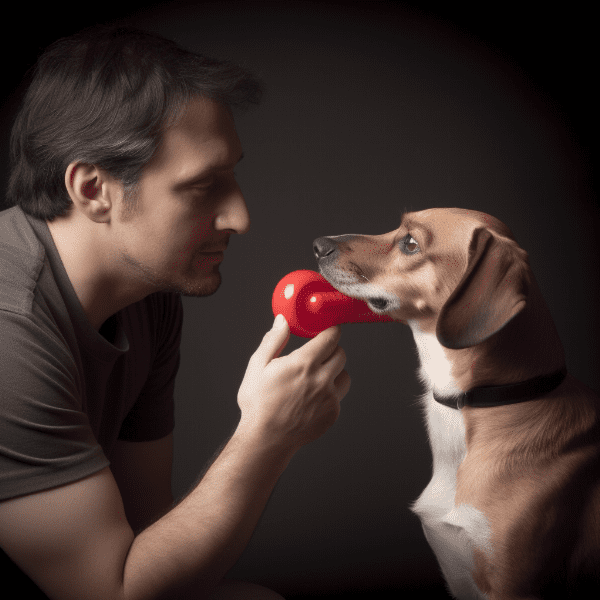
Providing Sufficient Exercise and Mental Stimulation
Providing your dog with sufficient exercise and mental stimulation is crucial in preventing mouthing behavior. A tired and mentally stimulated dog is less likely to engage in destructive behaviors, including mouthing.
Exercise
Regular exercise is important for a dog’s physical and mental health. Dogs that do not get enough exercise may become bored, anxious, and may engage in destructive behavior such as mouthing. Make sure your dog gets enough exercise each day by taking them for walks, playing fetch, or engaging in other activities that are appropriate for their breed and age.
Mental Stimulation
Mental stimulation is also important for preventing mouthing behavior in dogs. Dogs are intelligent animals that require mental stimulation to stay engaged and happy. You can provide your dog with mental stimulation by providing them with puzzle toys, treat dispensers, and other interactive toys that challenge their mind.
Training
Training is also a great way to provide mental stimulation for your dog. Teaching your dog new tricks and commands can help to engage their mind and prevent boredom. Training also helps to establish a bond between you and your dog and can help to reinforce good behavior.
Consistency
Consistency is key when providing your dog with exercise and mental stimulation. Make sure your dog gets enough exercise each day and provide them with mental stimulation through interactive toys, training, and other activities. Consistency helps to establish routines and reinforces good behavior.
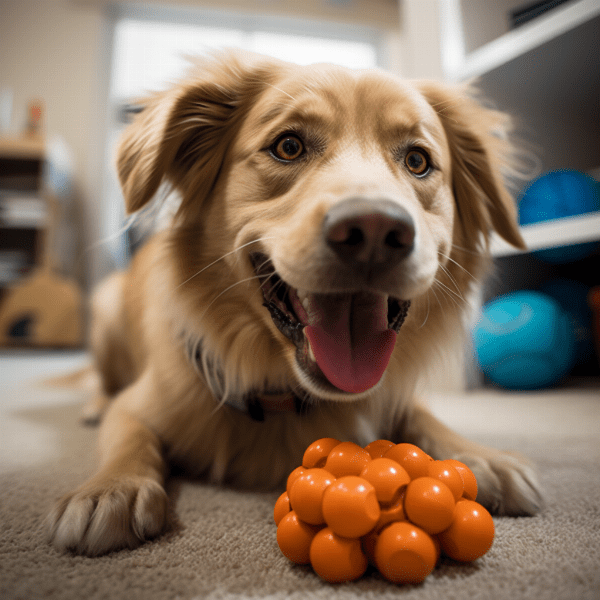
Seeking Professional Help if Necessary
If your dog’s mouthing behavior persists despite your efforts to correct it, it may be necessary to seek professional help. A professional dog trainer or behaviorist can help you identify the underlying causes of the behavior and develop a training plan that is tailored to your dog’s needs.
Medical Issues
In some cases, mouthing behavior in dogs may be caused by underlying medical issues. Dental problems, infections, or pain can cause your dog to mouth in an attempt to relieve discomfort. It is important to rule out any medical issues before beginning training.
Behavioral Issues
Mouthing behavior in dogs can also be caused by underlying behavioral issues. Separation anxiety, fear, or aggression can all contribute to mouthing behavior. A professional dog trainer or behaviorist can help you identify the underlying cause of the behavior and develop a training plan that addresses the root cause.
Training Plan
A professional trainer or behaviorist can help you develop a training plan that is tailored to your dog’s needs. This may involve a combination of positive reinforcement training, redirecting behavior, and other training methods. They can also provide guidance and support throughout the training process to help ensure success.
Consistency
Consistency is key when seeking professional help for mouthing behavior in dogs. It is important to follow the training plan developed by the professional and to be consistent in your approach. This will help to reinforce the behavior you want to encourage and discourage the behavior you want to discourage.
By seeking professional help if necessary, you can identify the underlying causes of mouthing behavior in your dog and develop a training plan that is tailored to their needs. With patience and consistency, you can train your dog to interact with you and others in a safe and appropriate way.
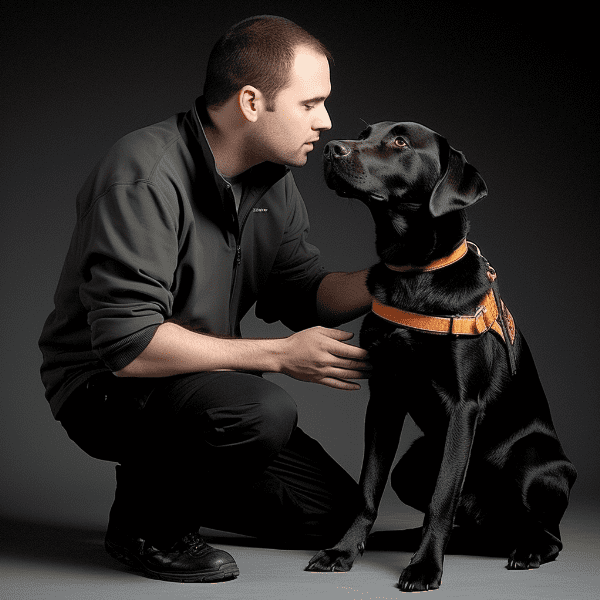
Teaching Children How to Interact with Dogs Safely
Supervision
Children should always be supervised when interacting with dogs. Even the most well-behaved dog can become anxious or agitated around children, and it is important to ensure that both the child and the dog are safe.
Gentle Touch
Children should be taught to interact with dogs gently and avoid rough play. Dogs may become excited or agitated by rough play and may engage in mouthing or other negative behaviors. Teach children to pet dogs gently and avoid grabbing or pulling on their ears, tails, or fur.
Avoiding Eye Contact
Children should also be taught to avoid making direct eye contact with dogs. Direct eye contact can be seen as a threat by dogs and may cause them to become anxious or aggressive. Teach children to approach dogs from the side and to avoid staring directly at them.
Using Appropriate Toys
Teach children to interact with dogs using appropriate toys, such as balls or tug toys. Avoid allowing children to use their hands or other body parts as toys, as this can encourage mouthing and other negative behaviors.
Positive Reinforcement
Teaching children to interact with dogs safely can also be reinforced through positive reinforcement. When children interact with dogs appropriately, praise and reward them. This will help to reinforce good behavior and encourage them to continue interacting with dogs safely.

The Importance of Socializing Puppies Early
Socializing puppies early is important in preventing mouthing behavior and other negative behaviors in adult dogs. Puppies that are not socialized may become anxious or fearful around new people and situations, which can lead to negative behavior.
Early Socialization
Socializing puppies early involves exposing them to a variety of people, animals, and environments during their critical socialization period, which typically occurs between three and fourteen weeks of age. This helps to teach puppies that new people and situations are not a threat and can help prevent anxiety and fear-related behaviors, including mouthing.
Positive Experiences
It is important to ensure that socialization experiences are positive for puppies. This means exposing them to new situations gradually and using positive reinforcement, such as treats and praise, to encourage good behavior. Avoid forcing puppies into new situations or exposing them to situations that may be too overwhelming.
Puppy Classes
Puppy classes can be a great way to socialize puppies in a controlled environment. These classes typically involve socialization with other puppies and people, as well as basic training and behavior modification techniques. Puppy classes can also provide guidance and support for new puppy owners.
Consistency
Consistency is key when socializing puppies. It is important to expose puppies to new people, animals, and environments regularly and to reinforce positive behavior consistently. This will help to establish routines and reinforce good behavior.
By socializing puppies early, you can prevent mouthing behavior and other negative behaviors in adult dogs. With patience and consistency, you can teach your puppy to interact with people and animals in a safe and appropriate way.
